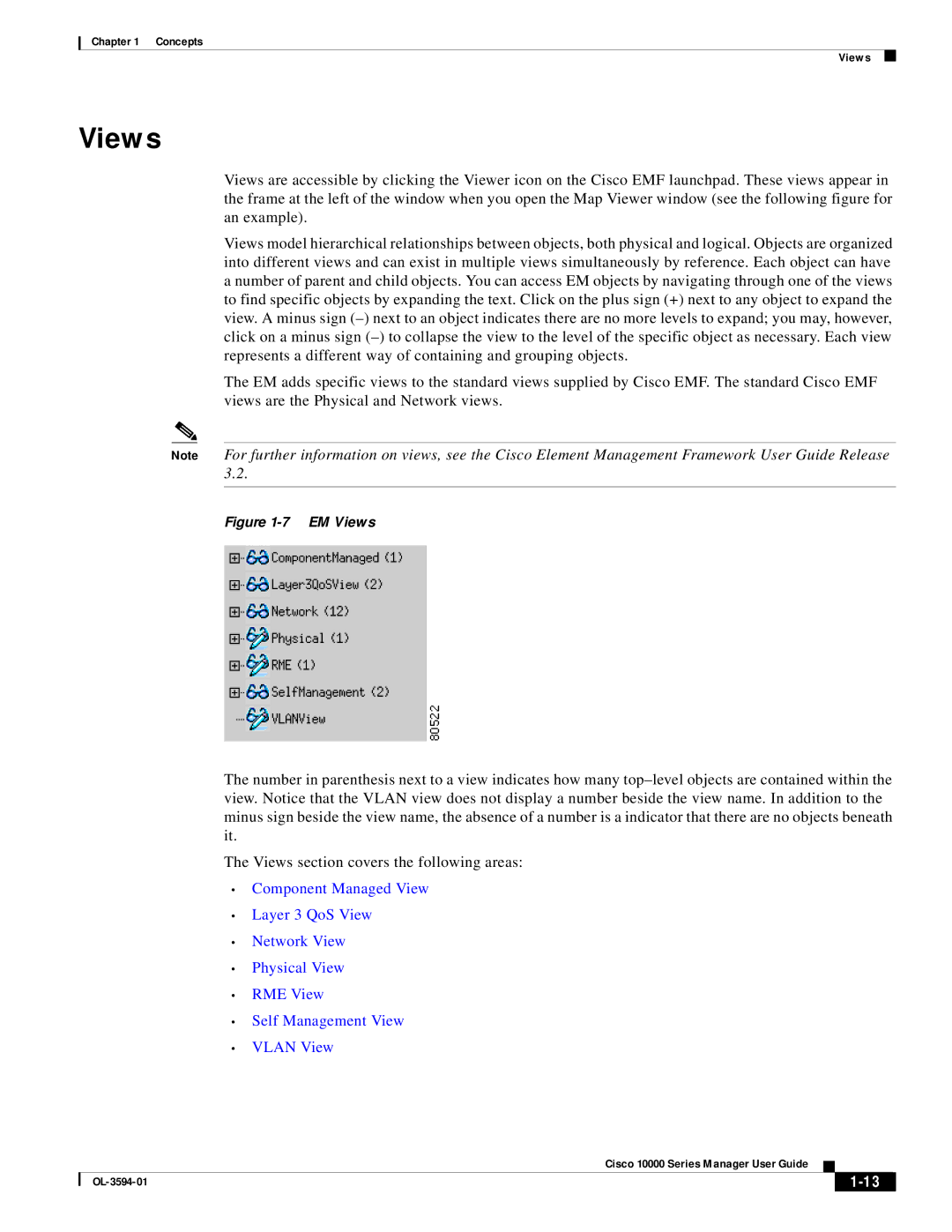
Chapter 1 Concepts
Views
Views
Views are accessible by clicking the Viewer icon on the Cisco EMF launchpad. These views appear in the frame at the left of the window when you open the Map Viewer window (see the following figure for an example).
Views model hierarchical relationships between objects, both physical and logical. Objects are organized into different views and can exist in multiple views simultaneously by reference. Each object can have a number of parent and child objects. You can access EM objects by navigating through one of the views to find specific objects by expanding the text. Click on the plus sign (+) next to any object to expand the view. A minus sign
The EM adds specific views to the standard views supplied by Cisco EMF. The standard Cisco EMF views are the Physical and Network views.
Note For further information on views, see the Cisco Element Management Framework User Guide Release 3.2.
Figure 1-7 EM Views
The number in parenthesis next to a view indicates how many
The Views section covers the following areas:
•Component Managed View
•Layer 3 QoS View
•Network View
•Physical View
•RME View
•Self Management View
•VLAN View
Cisco 10000 Series Manager User Guide
|
| ||
|
|
